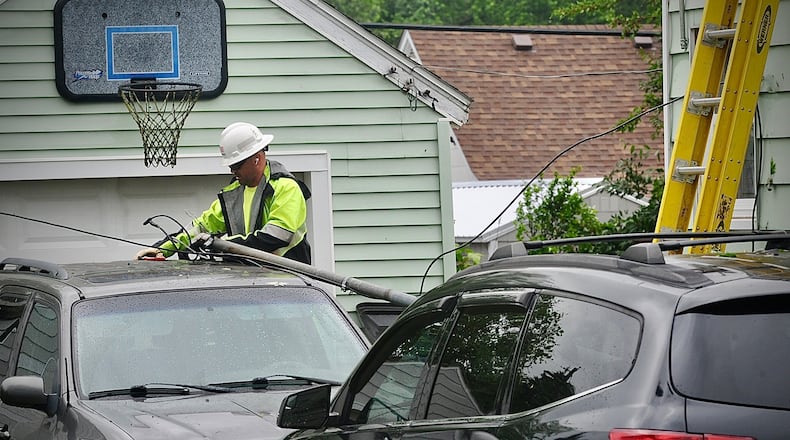Springfield Finance Director Katie Eviston pointed to the “massive spike” in the PJM capacity auction last fall as the reason for rate hikes. PJM Interconnection, the regional electric grid operator, saw a massive increase — from $29.70 to $300 in its latest capacity auction.
“Unfortunately, that’s here to stay for the next four to five years due to significant load growth and lack of new generation available to serve the load,” Eviston said.
The city’s current rate, effective October 2021 through September 2025, is $4.85 per kilowatt hour, a $1.1 million annual expense. The new rate will be an annual cost of about $1.5 million.
Ohio Edison’s tariff rate would have been $9.35 per kilowatt hour, which Eviston said would be an annual cost of $2.1 million.
The approval was on an emergency basis for the ordinance, as the quoted rate was valid for a maximum of five days.
“We’re in a bullish market, so prices are only expected to increase,” Eviston said.
The city received 11 quotes, with Dynegy being the lowest and best fit, according to city documents.
Assistant Mayor Dave Estrop said Ohio is “behind the 8-ball” and said energy companies “have us by the throat,” pointing to the House Bill 6 scandal involving FirstEnergy.
Estrop questioned if the city can incentivize renewable energy options like solar power to save on electric costs.
Larry Ricketts, People for Safe Water organizer who is also running for a seat on the city commission, during the meeting encouraged the city to look into solar power and other alternative energy sources. He used his own house as an example, saying “FirstEnergy owes me $150″ for solar power in the last 12 months.
The city “has a lot of open area” where solar could be used, Ricketts said, “especially in light of what these energy companies are doing.” He said citizens “were promised several years ago that with all the fracking that they were doing in the state of Ohio, our energy costs were going to do nothing but go down,” which has not been the case.
Springfield Mayor Rob Rue asked City Manager Bryan Heck to look at Richmond, Indiana and its vast solar fields to see “what they’re gaining with that investment and what that investment was.”
City residents may also see an $18 monthly increase in their Ohio Edison electric bills next month, with a case in front of the Public Utilities Commission of Ohio still pending. FirstEnergy, in a legal notice, said the increase for Ohio Edison would generate about $47,789,925, or a 6.7% increase in additional revenue.
About the Author

